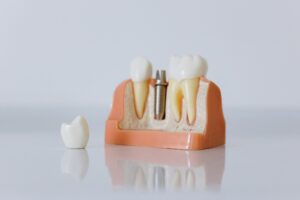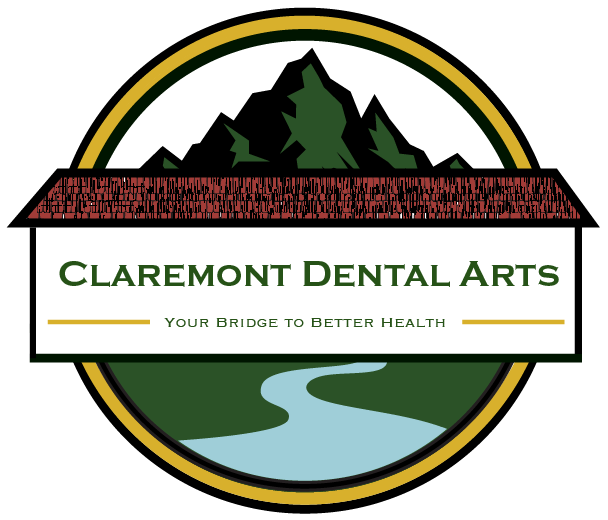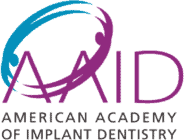
The science of dentistry is evolving rapidly, and there are many exciting new developments in the works. Some of the most interesting and important advances in dentistry come in the form of dental prosthetics.
Speaking generally, dental prosthetics are just what the name suggests: artificial devices that either repair or replace an existing tooth.
That’s simple enough-but what is considered dental prosthetics, exactly? What sort of treatments fall into this category? There are a number of different devices and treatments which are considered dental prosthetics.
Let’s look at some of the most common.
Schedule Your Consultation Today!
In the world of dentistry, the term “dental prosthetics” often pops up, leaving many wondering, “What is dental prosthetics?”. Simply put, dental prosthesis or prosthetics dentistry refers to a field dedicated to replacing missing or damaged teeth using artificial solutions. It encompasses various treatments designed to restore the function and aesthetics of one’s smile.
Perhaps the most common form of dental implant, dentures are a contemporary take on the artificial teeth of old.
- Designed to replace lost or missing teeth, dentures are a set of false teeth, mounted to a base which in turn is molded to fit over the gums.
- Held in place with a strong dental adhesive, dentures allow the wearer to take part in many everyday activities-like eating and speaking-much as they would with natural teeth.
- Dentures have come a long way over the last 30 years. They are stronger, more reliable, and easier to care for than ever before.
Closely related to dentures are dental bridges, which fill in the gap left by lost or missing teeth.
- They are called dental bridges because they work as a bridge over a river. The artificial teeth filling the space are attached to a base that is anchored to the natural teeth on either side of the gap.
- Bridges are made of porcelain which is colored to look like natural teeth, and like natural teeth, they must be brushed and flossed regularly.
Dental veneers are a less obvious sort of dental prosthesis. As the name suggests, they are made of a thin veneer of porcelain.
- Dental veneers are used to restore the appearance of damaged, misshapen, discolored, or spaced teeth. Here’s how they work: a thin shell of the desired shape and color is made.
- The front of the tooth to be treated is then shaped to accept the veneer by grinding away some of the enamel, and the veneer is then attached using a permanent dental adhesive. When in place, the veneer looks and functions like a natural tooth.
- Unlike bridges and dentures, veneers are permanent in that the tooth being treated is permanently altered to accept them.
Dental crowns are coverings for damaged teeth, usually but not always larger teeth like molars.
- A dental crown fits over the top of the damaged tooth, just like its namesake, and protects it from further damage.
- Dental crowns are a long-lasting kind of dental prosthesis, used when teeth have been chipped, cracked, or worn down.
- Crowns can last for up to 15 years or longer, and require the same care that a natural tooth does.
Finally, we come to dental implants, which may be the most exciting development in dental prosthetics.
- As with many kinds of dental prosthetics, dental implants are used to replace missing teeth. However, unlike dentures or crowns, dental implants are permanently implanted into the jaw bone.
- Here’s roughly how it works: a titanium base is implanted into the jaw and allowed to heal. When the base has healed in place, an artificial tooth is attached in place. Once the dental implant is completely installed, it looks, feels, and functions just like a natural tooth.
- t requires no more care than a natural tooth does and should last a lifetime with proper care.
A dental prosthesis is any device introduced to replace a missing part of the dental structure or to augment a defective dental structure. When we talk about a dental prosthesis? it could refer to a multitude of solutions like bridges, crowns, dentures, and even dental implants.
Diving deeper into prosthetics in dentistry, one might come across terms like prosthetic dental implants. These are not to be confused with regular dental implants. While a dental implant is a titanium post integrated into the jawbone to replace a tooth’s root, a prosthetic dental implant refers to the combination of the implant post and the prosthetic (like a crown) that is placed on top of it.
Now, a commonly asked question is, “Are dentures prosthetics?”. Yes, dentures,
which are removable replacements for missing teeth, indeed fall under the umbrella of dental prosthetic devices. Similarly, when pondering “are dental implants considered prosthetics?”, the answer is also yes. Dental implants, along with their associated crowns or bridges, are part of the prosthetics dental solutions. In conclusion, the world of prosthetics dentistry is vast and diverse. Whether you’re considering a simple bridge or pondering over the complexities of what is prostheses in dentistry, there’s a solution out there tailored for every dental challenge.
So now that we know what are considered dental implants, let’s look at another question: which dental implant is right for you?
The answer will depend on your individual situation and goals, but at Claremont Dental Arts our helpful staff will guide you through every stage of the process in order to ensure the best possible outcome for you and your teeth. So whether you’re interested in a dental prosthetic or something a bit more routine like an exam and cleaning, get in touch today. We’ll make an appointment and get you started on the road to a healthy, happy smile.




